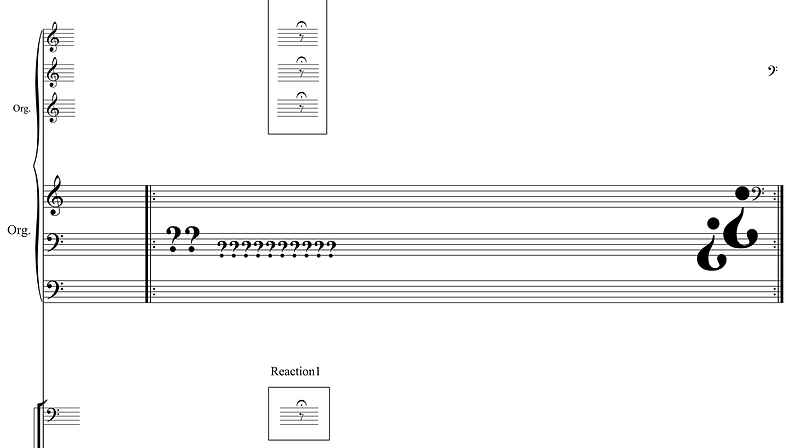
SYNESTHETIC
COMMUNICATION
Synesthetic Communication:
A Language of the Senses
Communication isn’t a message sent and received. It’s something that happens between us — a living process that unfolds through movement, sound, rhythm, silence, and the subtle vibrations of being together.
Synesthetic Communication gives words to this invisible language. It suggests that communication is not just what we say or even how we act, but how our senses intertwine to create meaning — how sound feels like warmth, how color holds tone, how rhythm becomes emotion. Meaning, in this view, is felt before it is understood.
It’s a framework for sensing connection — for listening with the whole body and allowing perception itself to become the medium of dialogue.
Most models of communication describe a sender, a receiver, and a message moving from one to the other. But real life doesn’t flow that way. When two people meet, communication happens in the space between — in the pauses, the breath, the glance, the subtle timing that reveals presence. It’s less about transmitting thoughts and more about resonating together.
Think of it as music. Each interaction is a kind of polyphony — layers of rhythm, emotion, and gesture that overlap and answer one another. There is no single melody; meaning forms through resonance.
The Science Beneath the Poetry
Synesthesia is usually described as a neurological curiosity — when one sense triggers another. A person who sees colors when hearing sounds, or feels textures in numbers. But new research tells us this isn’t so rare.
We are all wired for it.
Infants begin life in a state where the senses are fused — sight, sound, and touch are not yet separate. Later, specialization takes over, but the original connections remain alive inside us, quietly helping us integrate what we perceive. Synesthesia, then, isn’t an exception. It’s a trace of our first way of knowing the world — one that still lives within us.
When we reawaken this capacity, communication changes. A voice is no longer only sound; it has weight, color, texture. Silence has shape. The emotional field between us becomes tangible.
This is what I mean by Synesthetic Communication: communication as co-sensing. Meaning arises not through symbols but through shared perception — through the dance of nervous systems finding rhythm together.
Listening as Co-Play and Co-Creation
Neuroscience now supports what artists, musicians, and therapists have long intuited: connection is multisensory. Mirror neurons, inter-brain synchrony, and the body’s micro-movements all reveal that empathy begins before words. We don’t first understand and then connect — we connect first, and from that connection, understanding is born.
Every perception is already relational. Each gesture is an invitation, each response a movement in a shared improvisation. The moment I sense you, I also sense myself sensing you — a loop of awareness that folds inward and outward like breath.
This is co-play: a spontaneous duet of listening and responding, where meaning arises through mutual discovery rather than design. Synesthetic Communication takes this loop seriously. It treats communication as a form of music composed in real time — each voice distinct, yet inseparable from the others, resonating in a rhythm that belongs to neither one alone but to the space between.
The Playful Nature of Sensing
To communicate this way requires playfulness — the courage to not know in advance what something means.
Playfulness opens a field of curiosity where meaning can emerge naturally, without control. It allows tone, movement, or breath to carry as much significance as any word.
Polyphony replaces hierarchy. Listening becomes improvisation. What matters is not agreement but the rhythm of presence.
Where It Matters Most
In therapy, this way of listening makes connection possible when language isn’t enough — for instance, with autistic or non-speaking individuals, where communication flows through rhythm and movement long before words.
In education, it restores curiosity. When children are encouraged to learn through sound, color, and touch, they rediscover joy in understanding.
In art, it’s the source of collaboration itself — an awareness that every creation begins with shared resonance.
And in daily life, it reminds us that empathy is not a concept. It’s a bodily act.
The Practice
The ALP/Playground Approach is where Synesthetic Communication becomes experience. It offers spaces — we call them Joinment Spaces — where people learn to communicate through play: painting as one sings, moving as another breathes, speaking in gibberish, listening with color.
Each exercise trains perception. Not as a performance, but as attunement.
The goal is not to speak better but to sense together more deeply.
Through this, participants discover that communication is not something we do to each other. It’s something we do with each other — and with the world.
The Invitation
Synesthetic Communication invites us back to the language of the senses — the quiet network of gestures, rhythms, and vibrations that connect all living things.
To communicate synesthetically is to listen with your skin, to feel with your eyes, to let a shared silence say more than any explanation could.
It’s to join the same sensory rhythm, even for a moment.
And in that moment, something larger than either of us begins to speak — the polyphonic world that is always, already, sounding through us.
"While structured and choreographed, the music allows for a degree of freedom that both provides room for personal expression and demands a higher sense of aesthetic responsibility from each performer. "
- Nina Colosi, Streaming Museum
"In her compositions, Rosenbaum employs pre-recorded soundtracks, live electronics, contemporary notation, and her signature conducting-via-earphones technique and the Reflexive Music tools as she calls it. "
- Theresa Sauer, Notation 21